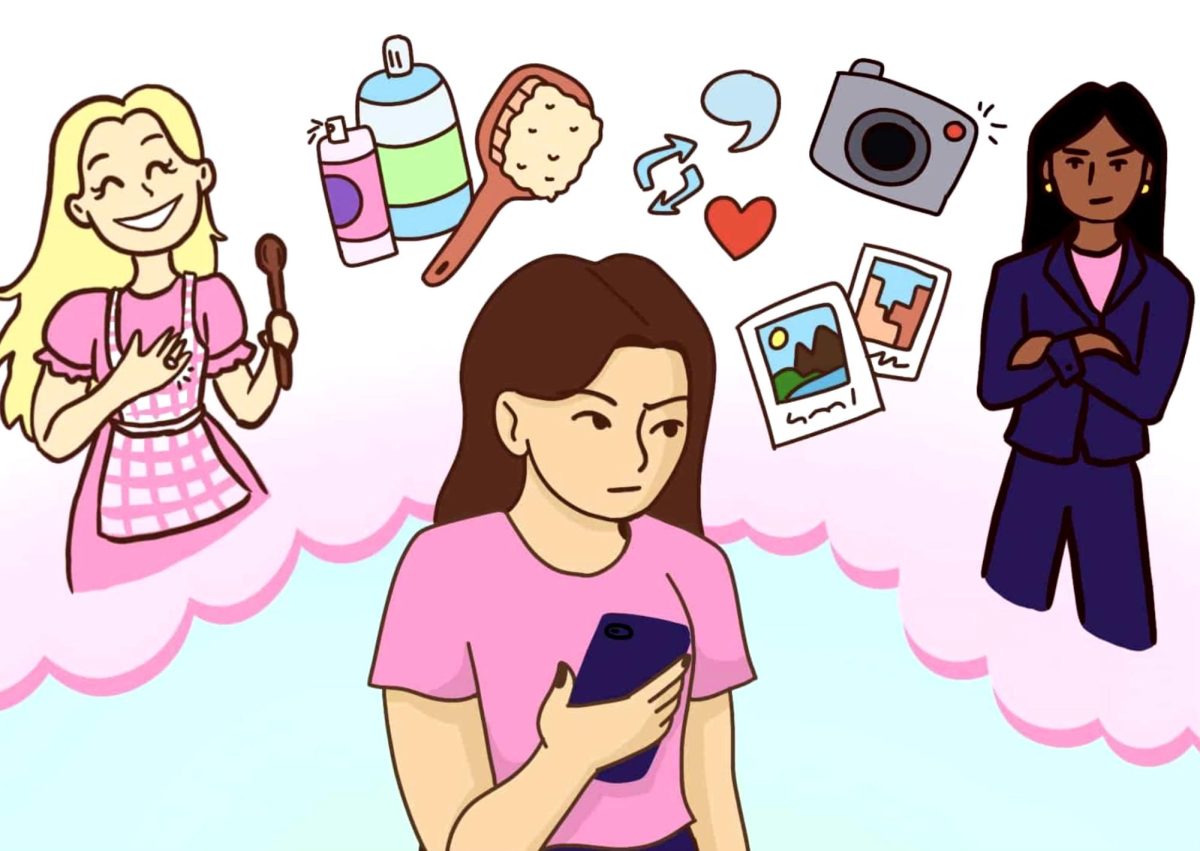Professional attire exists within the framework of the patriarchy. These dress codes and expectations, such as covering one’s arms or cleavage, operate as a mode of male power over women. What women are expected to wear in the workplace has become intertwined with the patriarchy in more ways than one, including the othering, restriction and sexualization of women.
The expectations of womenswear in the workplace are complex. One can find lengthy lists of rules to adhere to in many online spaces. Some rules can even appear to contradict each other, such as what colors are appropriate for the workplace.
“Professional clothing for women is required to have a feminine quality that only serves to mark women as different from men in the workplace,” said Darby Hickman, a recent UA graduate.
This feminine quality described by Hickman operates as a gendered sign to remind everyone in the workplace that women are lesser. Women have not always been in the workforce, and despite their inclusion, they still find themselves excluded as if they were the other or the intruder. Business attire works as a way to other the woman in her place of work.
In her essay “Compulsory Heterosexuality and Lesbian Existence,” Adrienne Rich details the ways in which women are oppressed through the framework of Kathleen Gough’s “The Origin of the Family.” One of the ways Rich says male power manifests is to “confine [women] physically and prevent their movement.”
In terms of professional womenswear expectations, high heels, skirts and dresses all restrict the movement of women, which causes women to take up less physical space. Under ideals of the patriarchy, women are expected to take up less space, constrained not only physically by clothes, but emotionally as well, which can subdue her in business settings.
“Women in the workforce are often also balancing childcare and home-keeping. High heels and other misogynistic dress codes only add to the physical stress of being a woman,” said Harmony Leverett, a graduate student in women’s studies. “Constant policing of how presentable a woman should look only further advances patriarchal work standards, prohibiting the advancement of women in career roles.”
Business dress codes assume that the woman’s body is naturally sexual and cannot exist outside of her sexuality. Breasts and thighs must be covered, and even shoulders can be considered a debatable subject as far as skin shown. Skirts and dresses should fall to at least the knees in most professional settings, and blouses should show minimal to no cleavage, as cleavage of any degree is considered too risque to be shown in the workplace.
On the subject of the sexualization of women’s bodies under these dress codes, the topic of the bra must be addressed. Bras are a harsh, restricting and even painful piece of clothing that one is almost required to wear in professional settings. Within the bra is a contradiction — it covers the sexualized nipple, yet it lifts the breasts in a way that represents sexual maturity, post-puberty and pre-menopause. Both the presence and the absence of a bra make a statement.
“In professional attire, bras are deemed a necessity,” said Sammy Bignault, a sophomore studying political science. “Not just that, it isn’t just a bra — it has to be a bra that can’t be visible. If I didn’t wear a bra or wore a colorful bra, I would be viewed as making a statement rather than just maybe having a preference.”
Business attire is one of the many ways that women are oppressed in our patriarchal society. These dress codes operate as a way to control women and other them. One must recognize the male power of professional wear and question it.









